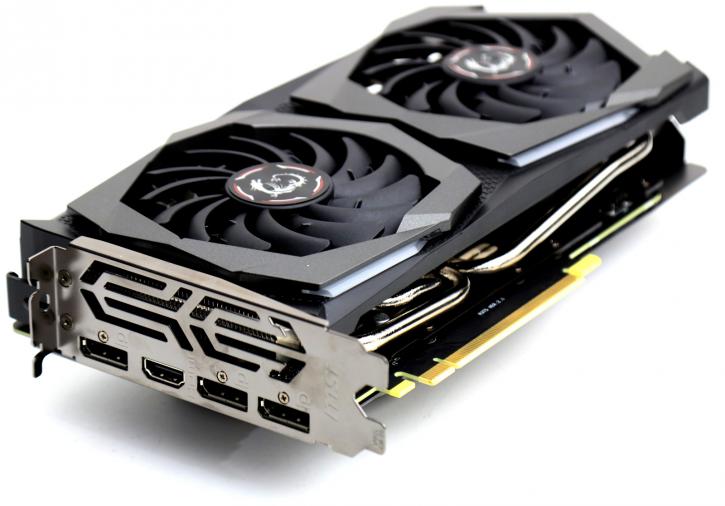Introduction
MSI GeForce GTX 1660 Ti GAMING X 6G review
2019, the year of the most confusing NVIDIA lineup ever?
We review the new MSI GTX 1660 Ti Gaming X edition. This is a more high-end product in the new mainstream line of the new GeForce GTX 1660 Ti Gaming series products. MSI has already factory tweaked the card for you, making this a very more affordable offer, yet without RTX features.
It has been a rough time for NVIDIA the past few months, roughly 5-6 months ago the GeForce RTX 2080 and 2080 Ti became available. People had been very interested and were warmed up for the DLSS (Tensor) features and the ability to play Battlefield V in that hybrid Raytraced way. NVIDIA initiated massive internet virals to gain media coverage. But then the bubble exploded in their face as end-users looked the other way when they learned about the incredibly steep price level. The 2080 Ti excels towards a 1250~1400 EUR/USD price tag, and the cheapest GeForce RTX 2060 should sit at 359 Euros but, in most cases, easily surpasses the 400 USD/EUR price bracket. Next to it all, the performance hit on Raytracing is substantial, and people often do not find Raytracing that important. Heck, the industry has gotten really good with the shader engine mimicking real-world environments. Regardless of that remark, the path forward in the future, IMHO, simply is DX-R, as graphics get closer to the real thing. DLSS is another discussion. On RTX cards you can utilize the AI Tensor cores to perform a supersampled post-processing AA algorithm. Initially, everybody was happy about it, however, as recent articles have indicated, it can add a level of blur to the entire scene. With these facts in mind, people figured, why buy an RTX card then?
Pricing, however, is everything and it has been a miscalculation from NVIDIA, over the past three years we have seen mid-range products rise from a 200 USD price now running towards 400 USD. If RTX cards would have been priced normally, people would have loved them, period. Previous quarter NVIDIA earnings have been the proof of that, a decline of almost 25% for their desktop graphics card business, and such a figure for NVIDIA is massive.
Initially, when the first rumors on the GeForce GTX (yes, with a G) surfaced, speculation was everywhere. A GTX? 1160 / 1660 and then at one point AIB product boxes surfaced on the web, the proof of it all. NVIDIA is now injecting a Turing based GPU into the mainstream called TU116. To make it more affordable NVIDIA stripped away the RTX and DLSS features, that means there are no RT and Tensor cores on this GPU. It's a fall back towards the original shader design model. And that's where we land today with this review.
The TU116-400 GPU has 1536 shader cores (aka CUDA cores / Stream processors) tied to 6GB of GDDR6 memory. You may expect two video cards based on the chip, the GTX 1660 and the 1660 Ti. The Ti variants will see the first launch wave and thus will get GDDR6 graphics memory, the non-Ti would be fitted with GDDR5 graphics memory as well as offering 6GB and 3GB configurations. In the year 2019 we, however, could never advise a 3GB graphics card. The 1660 series is making use of the Turing architecture and will not have Raytracing and Tensor cores, this is why NVIDIA dropped the RTX suffix back to GTX. The cards are to occupy the 250 to 300 USD price domain.
As you can observe, compared to the RTX 2060, the GTX 1660 Ti has got to deal with 25% fewer shader processors, which is substantial. The reference frequencies, however, are spicy, with a reference boost frequency up-to 1770 MHz and the factory tweaked models running into an up-to 1850 MHz domain. The new cards, (if priced right) can become NVIDIA's new money maker, as they should offer very decent gaming performance in the 1080p and 1440p resolutions. NVIDIA is not distributing a reference design card to the media. Ergo, the reviews you'll see are mostly based on AIB partner cards.
MSI GAMING X 6G
The 1660 Ti series graphics cards are based on Turing architecture, offering just that fundamental shading engine. The GPU has been cut-down, the available memory configurations will be 6GB GDDR6 for the Ti models and 3 or 6GB GDDR5 for the non-Ti models. Our tested card has been fitted with 6GB of GDDR6 memory (12 Gbps) running a 192-bit wide bus. This 120 Watt rated graphics card has 1536 active shader processors (that value is 1920 on the RTX 2060). It has a proper boost clock and there will be no differentiation for the reference values compared to the AIB partners.
Having smaller TU116 silicon with close to 6.6 Billion transistors it doesn't run too hot. The cooler is a dual-slot design. The card comes fitted with just one rear positioned power header (8-pin). MSI applies an updated TWIN FROZR 7 cooler for the GeForce GTX 1660 Ti which makes use of two 9 cm TORX 3.0 fans which combine the advantages of both traditional and dispersion fan blades to generate huge amounts of airflow. The new trims on the traditional fan blades create concentrated airflow for higher air pressure while also reducing noise. The Gaming X edition has been designed with budget in mind and is merely a few tenners more expensive over reference. It's an attractive product with good cooling and acoustic performance.
The card offers one HDMI port and three DisplayPorts. There is no DVI and/or Virtual link (USB) connector. This Turing 116 GPU empowered product keeps that GPU at roughly 65 Degrees C marker depending on game load. Though the GDDR6 memory has been not been tweaked, the ICs are stock 12 GHz (effective clock-rate) but can be bumped upwards towards 14 to 15 GHz with the flick of your fingers as we'll show you in the tweaking chapters. Check out the new gunmetal grey & black look combined with very nice Mystic Light RGB. Meet the GeForce GTX 1660 TI from MSI.


